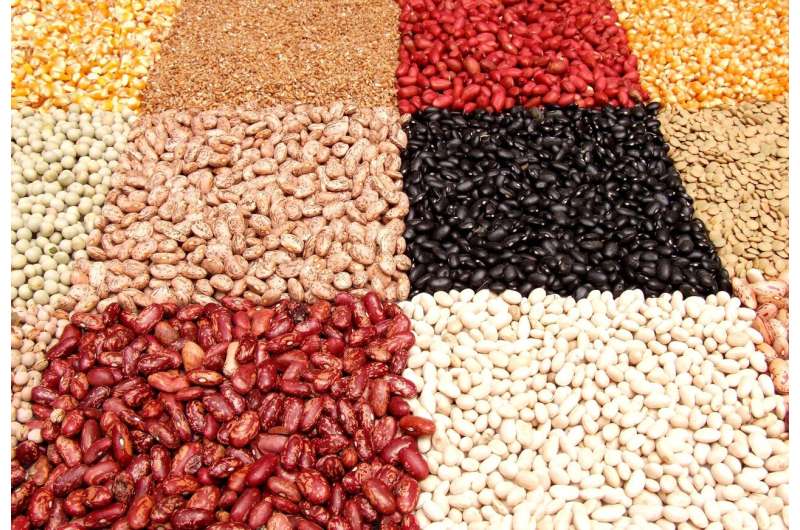Better heating method makes legumes easier to digest


While they have been part of our human diet for centuries, legumes like peas and beans are ultimately seeds for the next generation of plants. To protect themselves from being eaten by animals and insects, they contain “antinutrients” that are hard for animals—and humans—to digest.
These antinutritional compounds—which include tannins, lectins, trypsin inhibitors, and phytic acid—are broken down when beans and peas are heated. However, the large ovens that food processing companies currently use to heat beans and peas are inefficient. They can burn the outside before the inside has reached a temperature hot enough to deactivate the antinutrients.
Researchers from the University of Saskatchewan (USask) Department of Chemical and Biological Engineering have identified a new heating method—using radio frequency (RF) waves—that appears to be both more effective and efficient than the approach currently used in the industry. The paper is published in the journal Innovative Food Science & Emerging Technologies.
Tolen Moirangthem, a Ph.D. student from the group, compares RF waves to microwaves. “When you put a cup of water in the microwave, the water heats up, but the cup doesn’t. The same is true for the pea—the water inside heats up, but the rest of the pea doesn’t.”
Scientists call this process “selective heating,” because it can heat some areas within a material but not others. It seems to help maintain the desirable nutritional properties in pea or bean, which can break down with regular heating methods. And unlike the long heating times of traditional processes, the RF heating method only takes a few minutes.
The team hypothesized that during RF heat treatment, the water inside a legume expands and turns into steam, which would cause the pores inside to explode from the pressure. In turn, this would create larger pores in the samples, as well as more pores in total, as the steam looked for ways to escape.
Using the Canadian Light Source at USask, the research group confirmed that the beans treated with RF heat did in fact have more pores, and the heating method reduced the amount of an antinutrient (proteins called trypsin inhibitors) by 81%.
“We know that we have big potential with this project,” says Moirangthem. “Animal protein is very expensive in different parts of the world, so we need sustainable plant protein that can be produced at mass volume to feed the world population.”
This new heating method could help make bean and pea crops even more environmentally friendly to process, with the bonus of making legumes easier to digest.
More information:
Tolen Tombung Moirangthem et al, Experimental and computational study of synchrotron X-ray micro-computed tomography imaging in peas and pinto beans after radiofrequency heating, Innovative Food Science & Emerging Technologies (2025). DOI: 10.1016/j.ifset.2025.104033
Provided by
Canadian Light Source
Citation:
Better heating method makes legumes easier to digest (2025, June 24)
retrieved 25 June 2025
from https://phys.org/news/2025-06-method-legumes-easier-digest.html
This document is subject to copyright. Apart from any fair dealing for the purpose of private study or research, no
part may be reproduced without the written permission. The content is provided for information purposes only.




